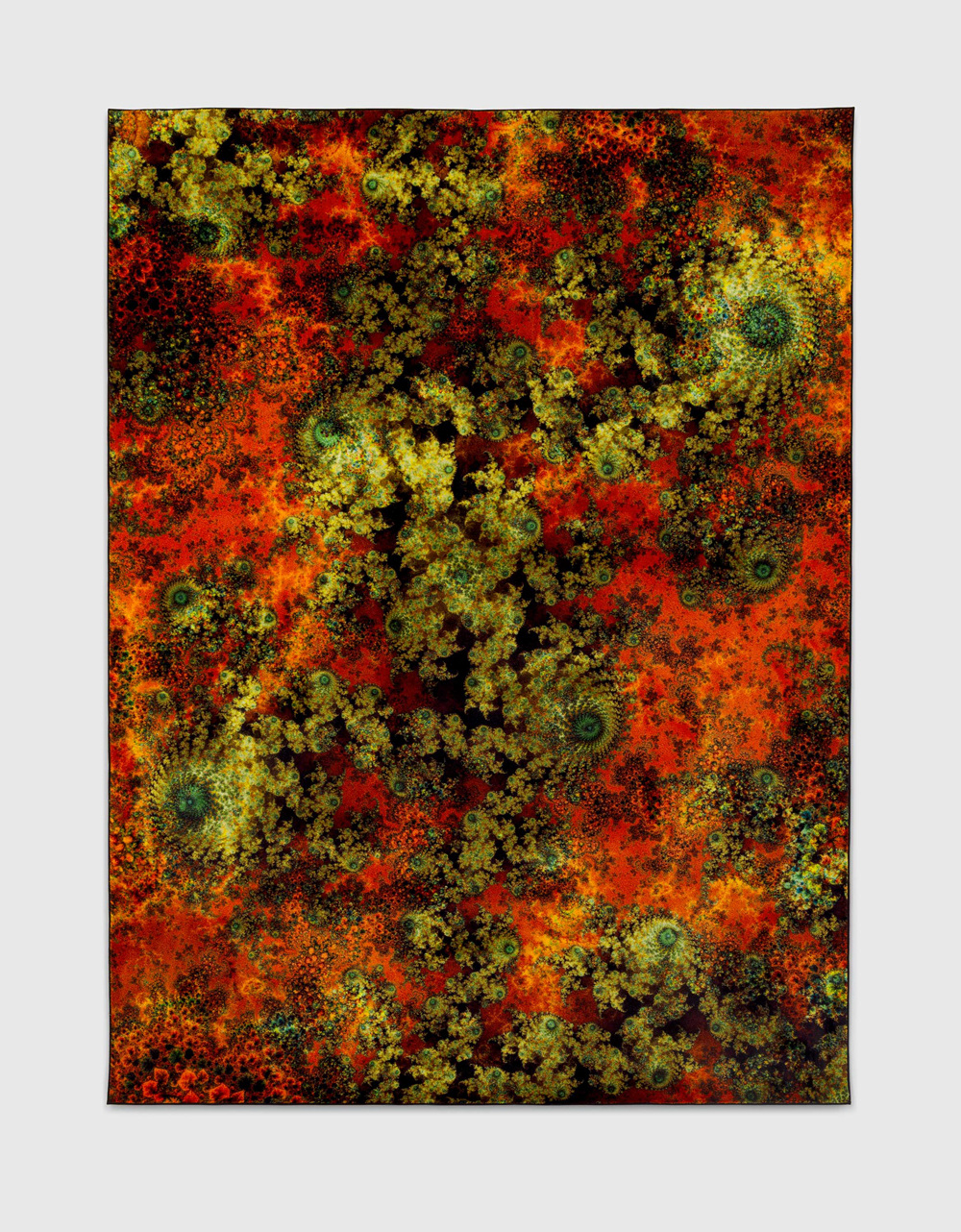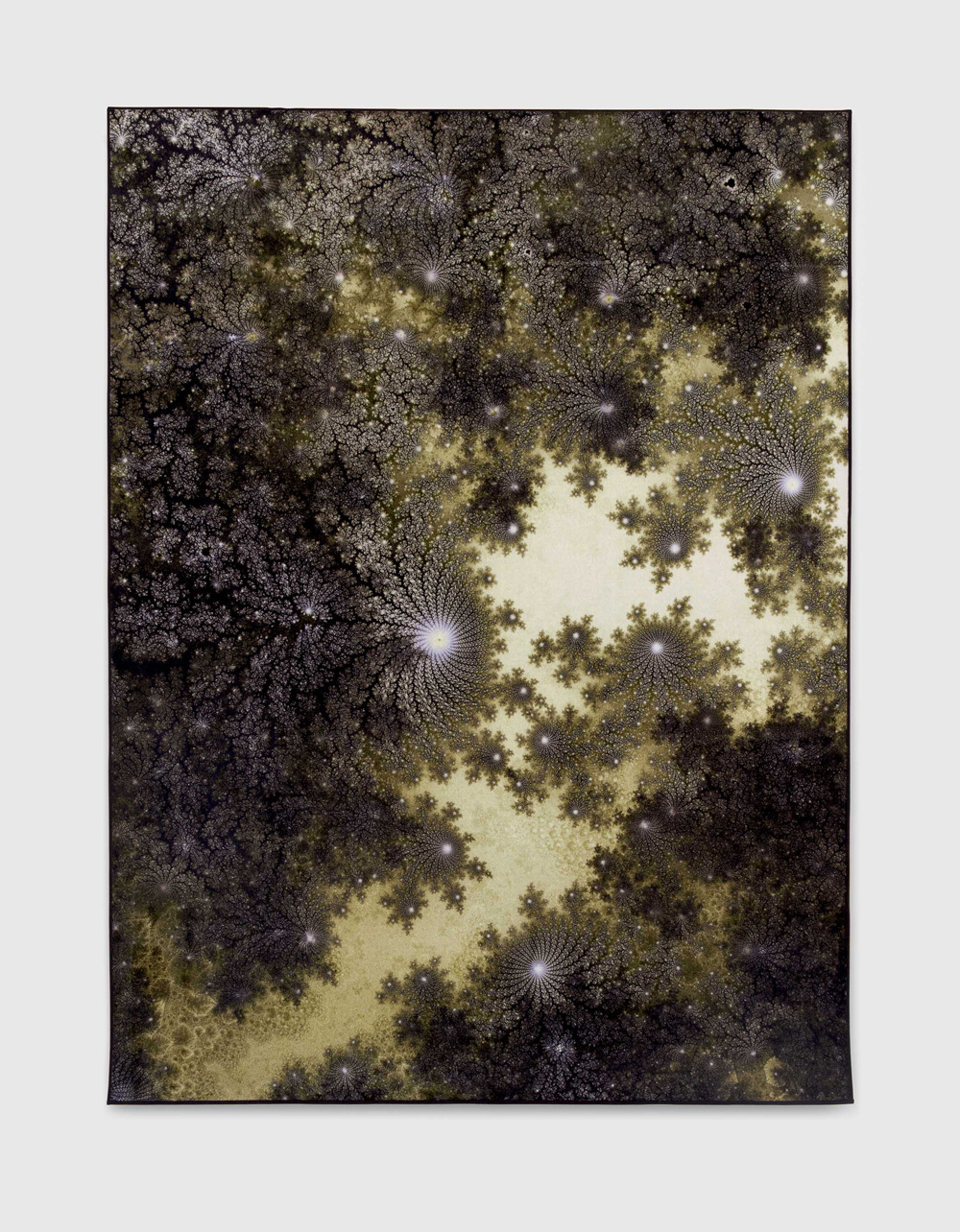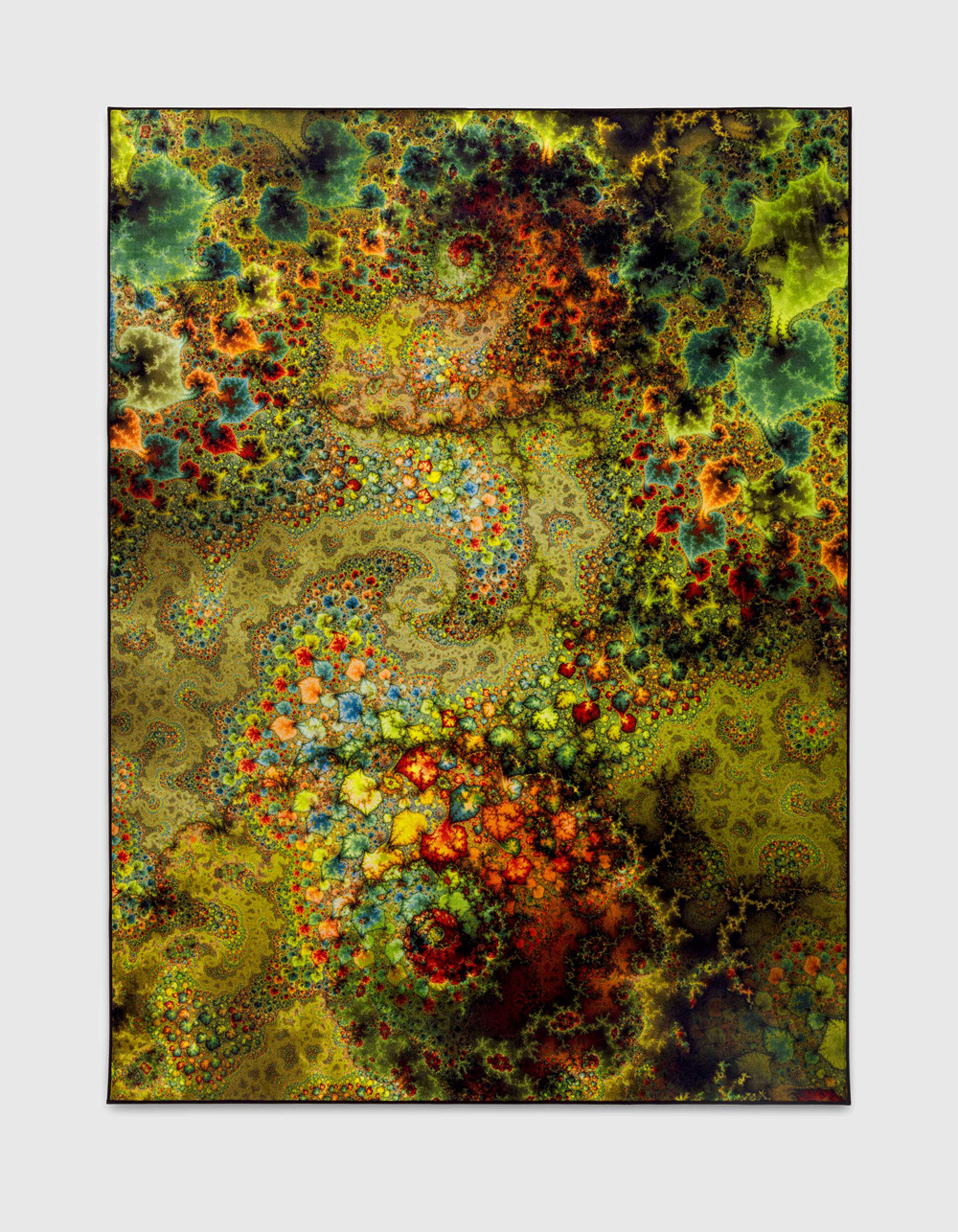Düsseldorf, Germany-based artist, Thomas Ruff's solo show “d.o.pe.” opens at David Zwirner gallery in New York, delivering unprecedented depth, color, and contrast in the artist’s body of work. Drawing from mathematics, literature, and music to construct images that evoke cellular microcosms, interstellar medium, and botanical elements, Ruff examines the liminal spaces between the artificial and natural universes using carpet as his photographic canvas. His works on view weave together the histories of tapestry as they pave new territory for photography and allow the viewer to choose the path to explore within them.

Ricky Amadour: In “d.o.pe.” you create a world of rich color and texture. Do these works echo a particular landscape, fictional or real life?
Thomas Ruff: They are both. When I was sixteen years old, we listened to bands like Santana and the Allman Brothers that had fantastic LP covers that were pretty psychedelic. We loved these kinds of images, and around [the year] 2000, I tried to create psychedelic images with fractal software but failed because the program was just too cheap and had an awful resolution. Eventually, I looked for better software and began creating these surreal, fantastical landscapes. To me, it's submarine, in space, and it could be anywhere in nature; it's artificial and technical.
RA: I know The Doors of Perception [published in 1954] by Aldous Huxley, wherein he uses mescaline to broaden his consciousness, was an inspiration to you. When did you first read this book?

TR: I also read Huxley when I was sixteen. There is an affinity between his theories and my visual experiments. I wanted to recreate my first virtual images into digital ones. Initially, I thought these landscapes reminded me of Bosch in the Museo Prado in Madrid. It's also a surreal landscape with surreal figures. It's divided into three parts, with Hell being pretty dark. The centerpiece is fantastic. At that time, I thought it was too much of an art historical reference, and maybe it was not a good idea.
RA: The story of Demeter has been a particular curiosity for you. What brought Greek stories and philosophies to your attention?

TR: These images remind me of a garden, the early seeds, and the colors of clothes. Chloë is an epithet for Demeter as the goddess for the young seeds. If you look closely, these pieces match a blooming garden.
RA: Given that these works are printed on carpet, what is the process, and how did you select this method?
TR: When I created the first work on the computer, I thought about how I should show it. Making it a photographic print and framing it on standard paper didn't make sense because it didn't look or feel like the photograph. So I thought I should print it on a different material, maybe on painter's canvas, but then I thought, no, I want to have a soft surface. I did my research and found a company in Belgium that has a long history of making tapestries. It's inkjet on carpet, and after it's printed on the surface, it goes into a bath, and then the color goes into the fiber. So the color is entirely in the carpet.
RA: Does it relate to darkroom photography to you?
TR: I like the idea that there's a bath that brings in the color. It's like a chromogenic print where chemicals have to react. Fifty or 60 years ago, color photographs had only one surface: Kodak paper. There was no other surface possible. Then came the inkjet printing technology from 2000, and you could choose at least other papers. Now you can do inkjets on metal, carpets, or any material.
“d.o.pe.” is on view at David Zwirner from September 15 to October 22, 2022, at 533 West 19th Street Brooklyn, NY 11233.










 in your life?
in your life?

